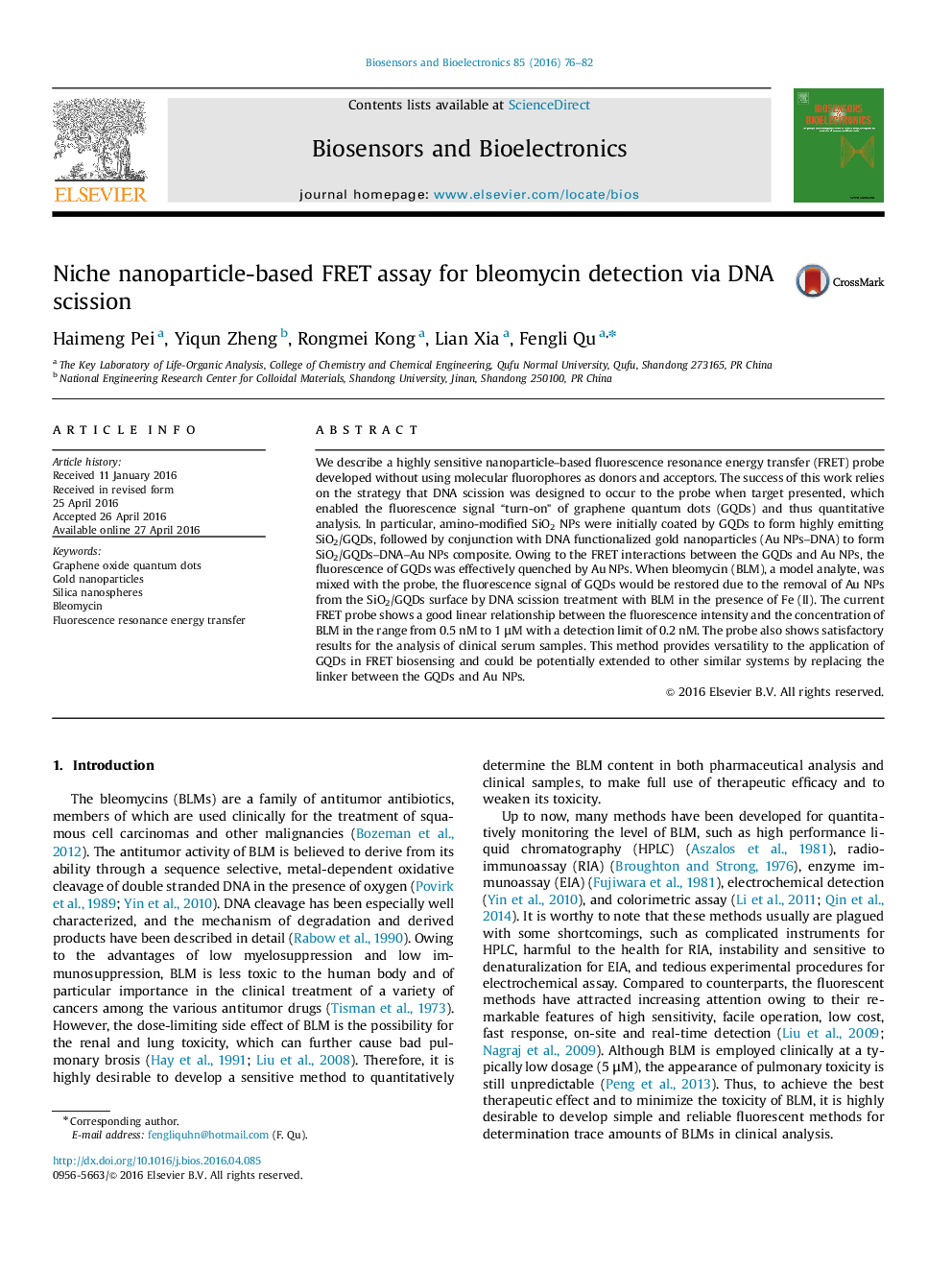| Article ID | Journal | Published Year | Pages | File Type |
|---|---|---|---|---|
| 7230265 | Biosensors and Bioelectronics | 2016 | 7 Pages |
Abstract
We describe a highly sensitive nanoparticle-based fluorescence resonance energy transfer (FRET) probe developed without using molecular fluorophores as donors and acceptors. The success of this work relies on the strategy that DNA scission was designed to occur to the probe when target presented, which enabled the fluorescence signal “turn-on” of graphene quantum dots (GQDs) and thus quantitative analysis. In particular, amino-modified SiO2 NPs were initially coated by GQDs to form highly emitting SiO2/GQDs, followed by conjunction with DNA functionalized gold nanoparticles (Au NPs-DNA) to form SiO2/GQDs-DNA-Au NPs composite. Owing to the FRET interactions between the GQDs and Au NPs, the fluorescence of GQDs was effectively quenched by Au NPs. When bleomycin (BLM), a model analyte, was mixed with the probe, the fluorescence signal of GQDs would be restored due to the removal of Au NPs from the SiO2/GQDs surface by DNA scission treatment with BLM in the presence of Fe (II). The current FRET probe shows a good linear relationship between the fluorescence intensity and the concentration of BLM in the range from 0.5 nM to 1 μM with a detection limit of 0.2 nM. The probe also shows satisfactory results for the analysis of clinical serum samples. This method provides versatility to the application of GQDs in FRET biosensing and could be potentially extended to other similar systems by replacing the linker between the GQDs and Au NPs.
Keywords
Related Topics
Physical Sciences and Engineering
Chemistry
Analytical Chemistry
Authors
Haimeng Pei, Yiqun Zheng, Rongmei Kong, Lian Xia, Fengli Qu,
